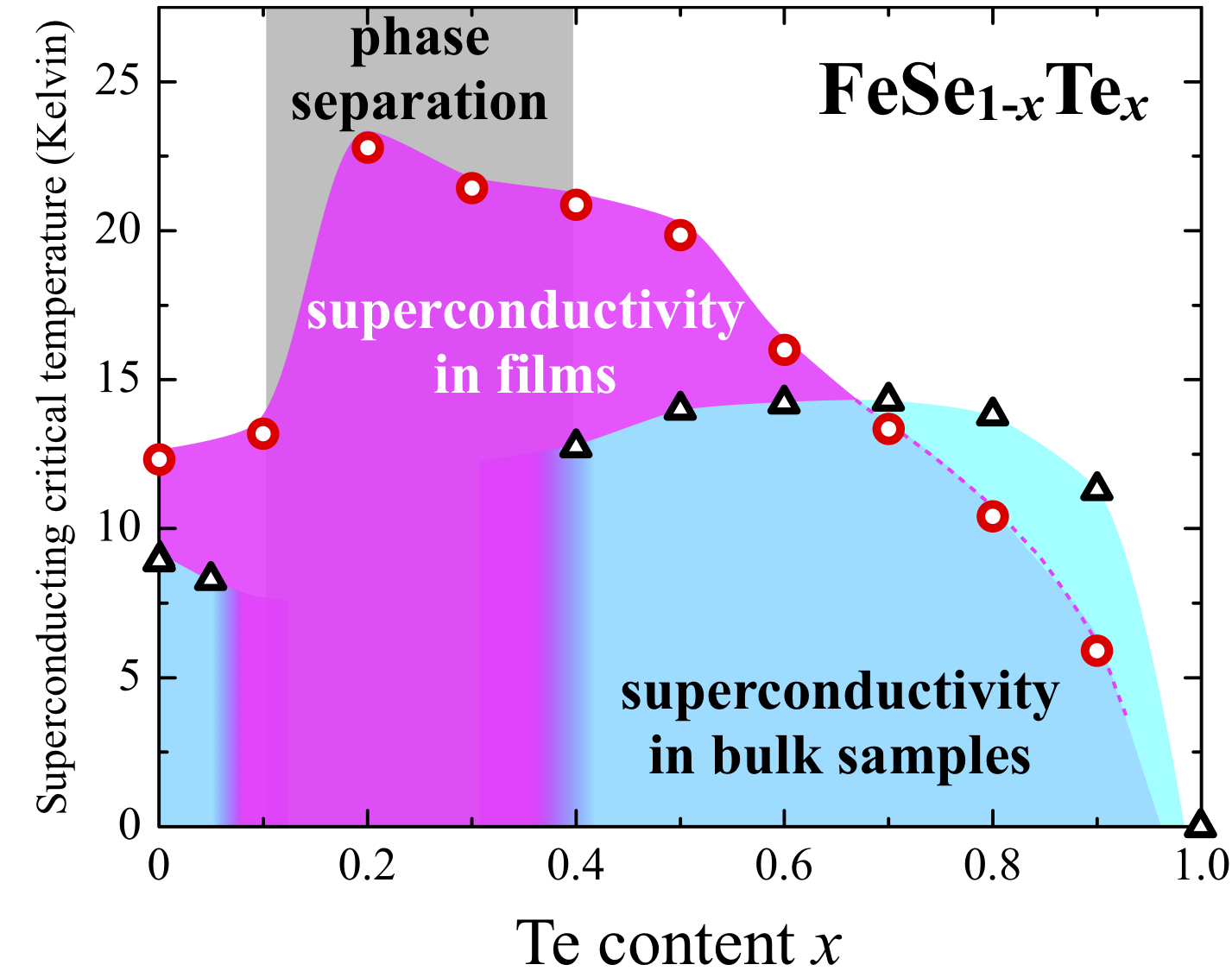Giant enhancement of superconducting critical temperature in iron chalcogenide Crucial step toward clarifying superconductivity mechanism

The research team of Assistant Professor Yoshinori Imai and Professor Atsutaka Maeda in the Department of Basic Science at the University of Tokyo Graduate School of Arts and Sciences have demonstrated a giant enhancement in superconducting critical temperature (the temperature at which a material enters a superconducting state) in iron chalcogenide. The critical temperature was increased from 15 Kelvin (-258 centigrade) to 23 Kelvin (-250 centigrade). These remarkable results were achieved by creating an iron chalcogenide film with a composition that was difficult to achieve with conventional manufacturing methods.
Iron chalcogenide is comprised of iron (Fe), tellurium (Te) and selenium (Se). Using conventional synthetic procedures, regions exist in which a single solid solution does not form, that is, regions are formed in which the ratio of selenium and tellurium are not constant (phase separation occurs). This was a significant obstacle to understanding the characteristics of the iron chalcogenide. The current research is a major breakthrough and has overcome this obstacle for the first time by creating an iron chalcogenide film.
Since iron chalcogenide is an iron-based superconductor, this research should be a crucial step in the clarification of the mechanism of superconductivity in these materials. In addition, the resulting giant enhancement of critical temperature observed in this study will accelerate research toward the application of iron-based superconductors, and will also provide a novel route for increasing critical temperature in other superconductors.
This research was published online in the Early Edition of the journal Proceedings of the National Academy of Sciences of the United States of America on 2 February 2015.
This work was partially supported by Strategic International Collaborative Research Program, Japan Science and Technology Agency and is a part of the “Establishing the Basic Science and Technology for Iron-based Superconducting Electronics Applications” project (Japan research leader: Professor Hiroshi Ikuta, Graduate School of Engineering, Nagoya University; EU research leader: Senior Research Scientist Kazumasa Iida, Leibniz Institute for Solid State and Materials Research, Dresden) under the JST-EU (EC EG RTD) Coordinated Research Project “Superconductivity”.
Press release (Japanese)
Paper
, "Suppression of phase separation and giant enhancement of superconducting transition temperature in FeSe1-xTex thin films", Proceedings of the National Academy of Sciences of the United States of America Online Edition: 2015/2/3 (Japan time), doi: 10.1073/pnas.1418994112.
Article link (Publication)
Links
Graduate School of Arts and Sciences
Department of Basic Science, Graduate School of Arts and Sciences
Maeda Laboratory, Department of Basic Science, Graduate School of Arts and Sciences
Department of Integrated Sciences, College of Arts and Sciences







